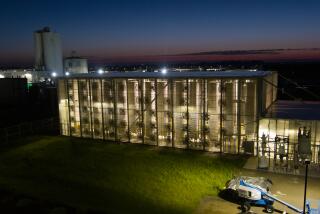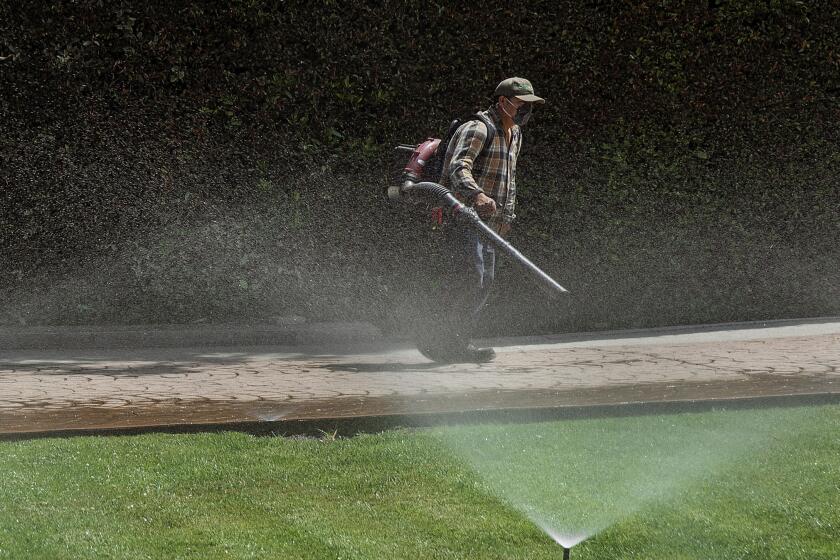Indoor Air-Cleaning System Rooted in Plants
- Share via
WASHINGTON — Green plants may do more than add a touch of nature to the home or office. Some scientists believe they can aid human health by “eating” pollutants commonly found in indoor air.
W. C. Wolverton, an environmental engineer retired from NASA who has his own lab in Picayune, Miss., says that potted plants can serve as amazingly efficient consumers of gases such as formaldehyde, benzene and trichloroethylene.
“I think we are closing in on the real economic solution to the indoor air pollution problem,” Wolverton said in an interview.
Florists and nurserymen, through the Associated Landscape Contractors of America, have set up the Foliage for Clean Air Council to publicize the findings of Wolverton and others.
A Mississippi businessman, Wayne Anderson, will market Wolverton’s “Nature’s Filter,” a device that draws air through a potted plant’s root system to maximize the air-cleansing effect.
“We’ve done a lot of testing on it and it looks really good,” Anderson said. His Alliance Research and Manufacturing Corp. will sell the filter through interior landscapers for $130.
Wolverton says that a plant equipped with the filter can do the job of 100 other plants in cleansing indoor air of fumes given off by cigarettes, paints and varnishes, particle board or synthetic carpet.
His work has been focused on benzene, formaldehyde and trichloroethylene, all compounds found commonly in homes and offices and known to cause irritation and illness and perhaps cancer. He has used dwarf azaleas, golden pothos, bamboo palms, English ivy, potted mums and other plants.
The research began as part of the National Aeronautic and Space Administration’s planning of space habitats where people would live for years without a change of air.
Not all experts in the field are sold on Wolverton’s findings.
“I’m a Wolverton skeptic,” said Thad Godish, professor of natural resources at Ball State University in Muncie, Ind. “I think everybody should have plants in their houses, but it’s highly improbable that they’ll be useful for air-cleaning.”
Godish published a critique of Wolverton’s earlier report on spider plants and formaldehyde fumes from particle board.
“The small amount I saw just said there’s no way in the world putting spider plants in the house is going to make a difference,” Godish said.
Wolverton acknowledged that there were important gaps in his early studies, but said his latest findings answer those questions.
“Our original work was limited,” he said. “Those have been constructive criticisms.”
He said the cleansing process he discovered is more complicated than it first appeared.
“At first we thought the plant leaves were doing all the work,” he said. “Now we find that the soil and microorganisms are major players.”
There was some concern, Wolverton said, that a plant exposed to nasty chemicals would absorb them for a while and then “just get sick and die and dump it back into the environment.”
Instead, he said, the plants seem to get better at filtering out air pollutants.
“As we keep exposing the plants, they seem to absorb more and more, rather than less and less,” he said.
He said that microorganisms in the potting soil may adapt to the benzene, formaldehyde or other chemicals and begin to thrive on them.
“This is not surprising, since it is a well-established fact that microorganisms have the ability to genetically adapt, thereby increasing their ability to utilize toxic chemicals as a food source when continuously exposed to such chemicals,” Wolverton wrote in a 1989 report for NASA.
He said the people most likely to benefit from “pollution-eating” plants are those living in tightly sealed and insulated houses, or in mobile homes, many of which are made of materials that give off suspect fumes.






